Key takeaways:
- Gender equality advocacy emphasizes challenging societal norms and fostering inclusivity through shared experiences.
- Engaging with government channels is essential for advocacy, turning personal narratives into impactful policy discussions.
- Building coalitions based on trust and collaboration amplifies efforts and celebrates collective achievements in the fight for equality.
- Patience and relationship-building with policymakers are crucial for sustained advocacy success and meaningful change.

Understanding gender equality advocacy
Gender equality advocacy is about recognizing and challenging the societal norms that often dictate the roles and value assigned to different genders. I remember attending my first workshop on this topic, feeling overwhelmed but inspired as I listened to stories of resilience from women who had faced systemic discrimination. What struck me was how their experiences mirrored so many others, making me wonder—how many voices go unheard in this crucial dialogue?
At its core, gender equality advocacy isn’t just about policy changes; it’s about fostering a culture of respect and inclusivity. I once participated in a community brainstorming session where we mapped out solutions to local inequalities. The passion in the room was palpable as people openly shared their stories, reinforcing my belief that advocacy springs from shared experiences and collective voices.
When we discuss gender equality, we must ask ourselves—who benefits from maintaining the status quo? My journey has shown me that true advocacy involves listening actively, confronting biases, and working together to build bridges. Every small step taken can contribute to a larger movement, and I often reflect on how collaboration can ignite change in ways we sometimes overlook.
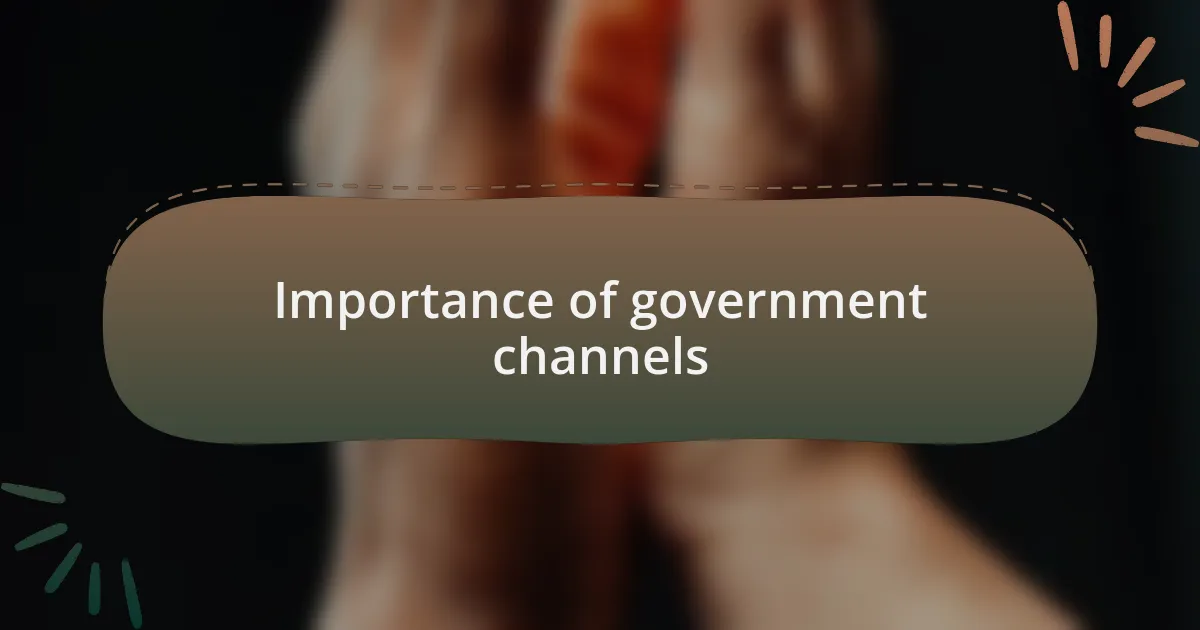
Importance of government channels
Government channels play a crucial role in gender equality advocacy as they provide a structured pathway for voices to be heard. I recall attending a legislative hearing where advocates, including myself, were able to present testimonies that highlighted the pressing issues faced by marginalized genders. The energy in that room was electric—advocates speaking passionately, and lawmakers listening intently—illustrating how these formal platforms can transform personal stories into impactful policy discussions.
Furthermore, engaging with government channels allows for the integration of advocacy into the wider political agenda. During my experience lobbying for better support systems for survivors of gender-based violence, I discovered how essential it is to connect personal narratives with legislative action. It is a reminder that every bit of advocacy can potentially shift the gears of policy, making rooms where decisions are made more inclusive of diverse experiences.
I often ask myself: how can we ensure these channels remain accessible? Ensuring equity in advocacy spaces involves not only utilizing established government pathways but also shaping them to reflect the nuances of our communities. It is a continual journey, one where I have learned that persistence in engaging with government entities can eventually lead to meaningful change.
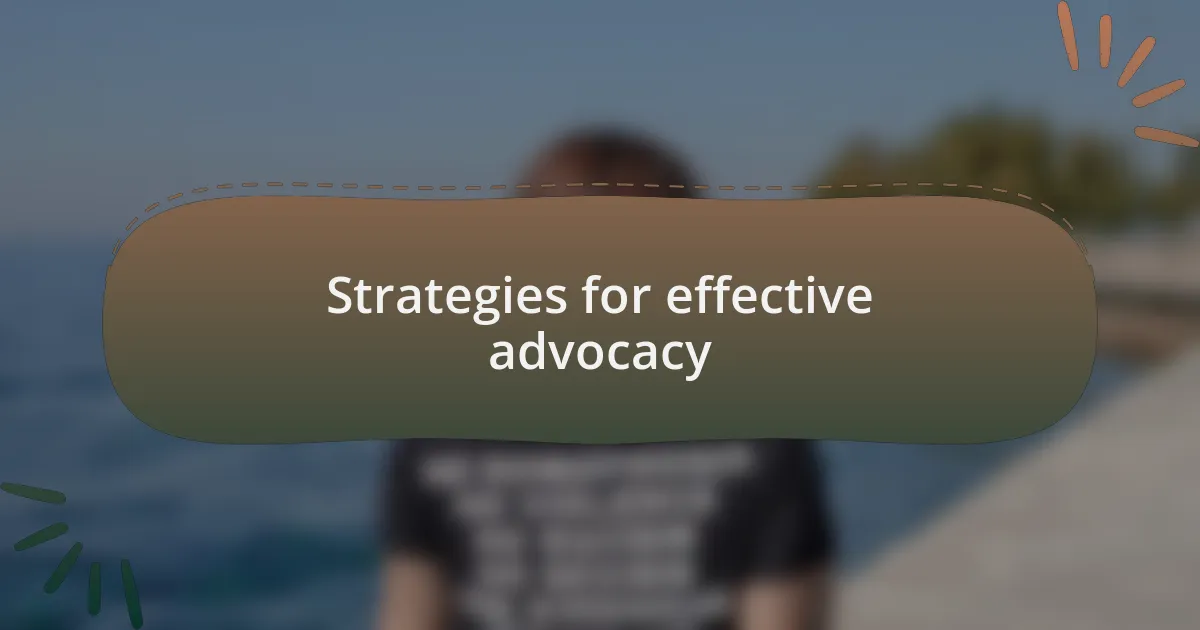
Strategies for effective advocacy
One of the most effective strategies for advocacy is building relationships with key stakeholders. For instance, I once reached out to a local representative who was already sympathetic to gender equality issues. Over coffee, I shared stories from my community that linked directly to the policies we were advocating for. That simple personal connection transformed our approach; it became less about a cold email and more about shared human experiences.
Another strategy I’ve found invaluable is creating coalitions with other advocacy groups. I remember collaborating with a network of organizations focused on various aspects of gender equality—from economic empowerment to health rights. Together, we pooled our resources and voices, which not only amplified our message but also demonstrated a united front to lawmakers. It’s fascinating how synergy can push for change when individual efforts may fall short.
Lastly, harnessing the power of storytelling can deeply resonate within the advocacy journey. I often reflect on moments when sharing a personal narrative has influenced opinions and even legislative outcomes. When people connect emotionally with a story, it often inspires action. But I wonder, how many of us are comfortable enough to share our experiences? Embracing vulnerability can be a game changer in advocacy, opening hearts and minds to the issues at hand.

Building coalitions for change
Building coalitions for change requires a willingness to look beyond our individual missions and unite for a common cause. I once participated in a workshop where various advocacy groups shared their unique perspectives. Listening to their experiences deepened my understanding and made me realize that our struggles, while different, often intersected in meaningful ways. Have you ever considered how your own story might resonate with others in the fight for gender equality?
In my experience, the most effective coalitions are those built on trust and shared goals. When we decided to join forces with a community organization focused on education, I initially felt hesitant. However, through open dialogue, we discovered that our visions aligned perfectly. This collaboration not only strengthened our outreach efforts but also fostered a sense of solidarity that I had never anticipated. How many opportunities for collaboration have you overlooked, simply because of a lack of communication?
I’ve found that celebrating small victories within coalitions can significantly boost morale and motivation. After one particular campaign, we held a gathering to acknowledge everyone’s contributions, from grassroots activists to policymakers. Witnessing the smiles and camaraderie at that event reminded me that change doesn’t happen overnight. Instead, it’s a mosaic of collective achievements that build momentum over time. Don’t you think that recognizing these moments can fuel our passion in this long journey toward gender equality?
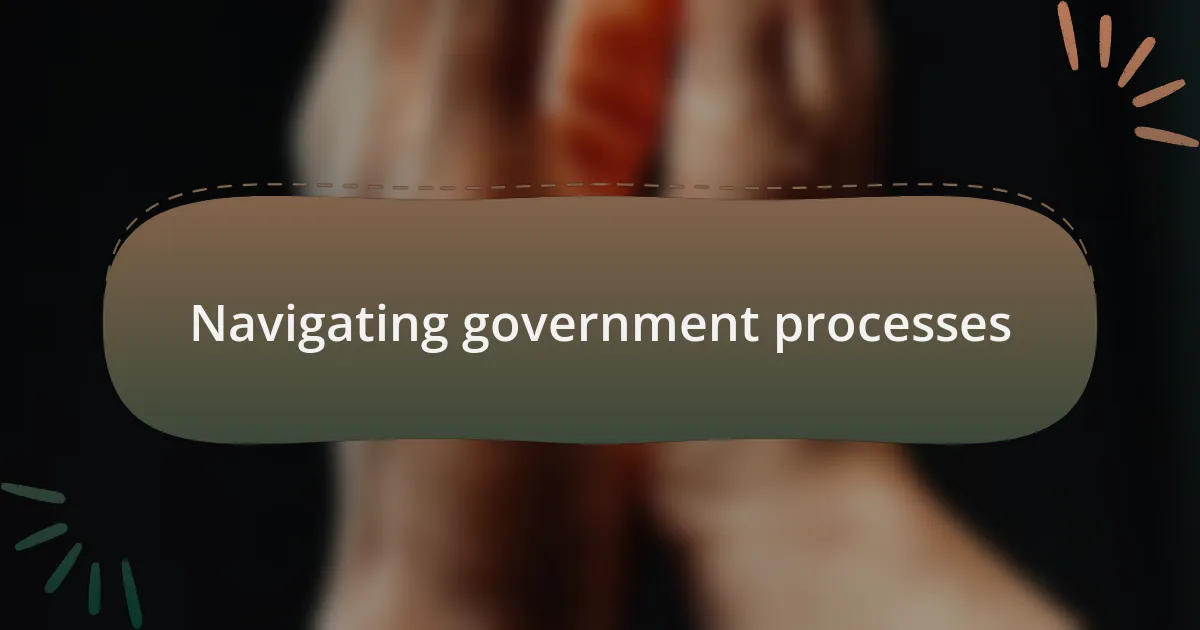
Navigating government processes
Navigating government processes can feel daunting, especially when it comes to advocating for gender equality. I remember my first attempt to engage with local officials; I felt a mix of excitement and nerves. It struck me how essential it is to prepare thoroughly—understanding the bureaucracy can significantly enhance our chances of success. Have you ever spent hours researching the right contacts, only to realize your efforts could have been streamlined?
When I finally reached out to a government representative, I learned the importance of clarity in communication. Crafting a concise yet compelling message about our cause was crucial. I made sure to highlight not just the issues but also potential solutions, making it easier for them to see how they could help. How often do we focus on the problems without offering a way forward?
Building relationships within government channels is just as important as the formal processes. I took the time to attend town hall meetings and engage in community discussions. This approach not only made me feel more connected but also gave me invaluable insights into the priorities of local leaders. Have you considered how these relationships could amplify your advocacy efforts? In my experience, it’s those informal connections that often pave the way for meaningful change.
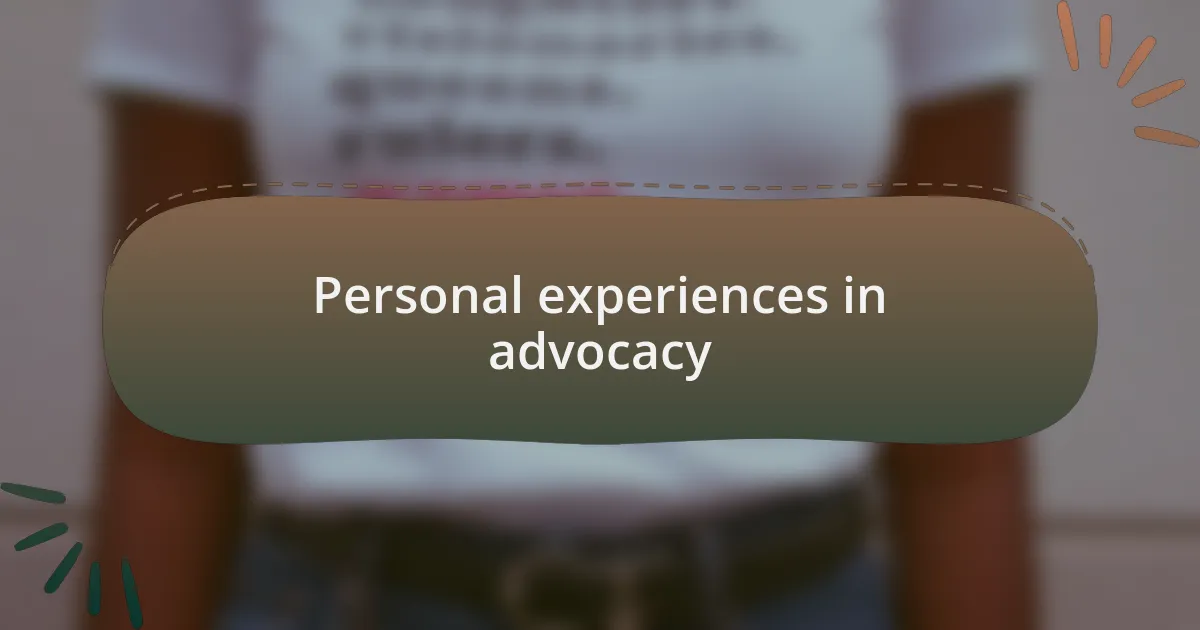
Personal experiences in advocacy
Advocacy is personal, and each interaction leaves its mark. I vividly recall a meeting with a local council where I shared stories of women impacted by gender inequality. Their faces reflected a mix of understanding and concern, which empowered me to keep pushing for our cause. Have you ever felt that electric connection when sharing a true story? It’s those moments that remind me why advocacy matters.
In my journey, I often faced moments of doubt. There was a time when I proposed a gender equality initiative and received criticism, which initially stung. But I learned to embrace constructive feedback and use it as fuel to refine my approach. How do we turn setbacks into stepping stones? For me, it’s about listening, adapting, and responding to those who challenge us.
The small victories in advocacy can be the most uplifting. After months of persistence, I saw my community adopt a policy that supported women’s rights in local businesses. Standing there, witnessing the changes we fought for, stirred emotions I can hardly describe. Have you ever felt the sweetness of progress? It’s those sweet victories that motivate me to continue advocating for gender equality, knowing that every moment spent is worth the fight.
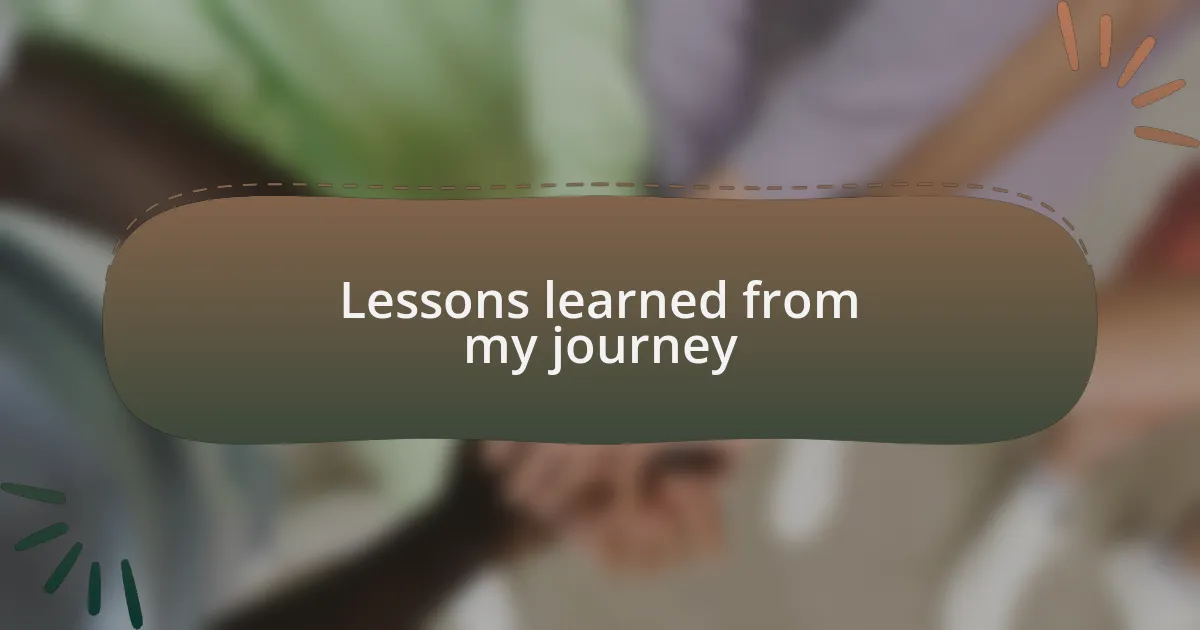
Lessons learned from my journey
There are moments in advocacy that reshape my perspective entirely. I remember attending a national conference where I connected with activists from diverse backgrounds. Listening to their stories of resilience ignited a deep understanding of how interconnected our struggles are. Isn’t it fascinating how shared experiences can unite us and enhance our voices?
One pivotal lesson I learned is the importance of patience. Early in my journey, I was eager for immediate results and found myself frustrated with slow progress. However, through observation, I discovered that meaningful change often takes time and requires sustained effort. How often do we overlook the power of persistence? Now, I appreciate the process, recognizing that every small step contributes to a larger movement.
Engagement with policymakers taught me the value of building relationships. I once spent weeks preparing for a meeting with a government official, and when the day finally came, I realized it wasn’t just about presenting my case; it was about establishing trust. Did you know that genuine connections can amplify our impact? By fostering these relationships, I learned how vital collaboration is in advancing gender equality initiatives effectively.